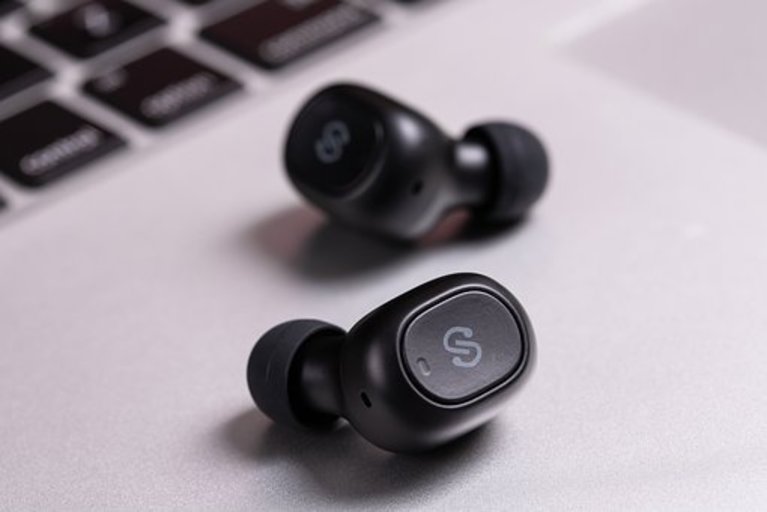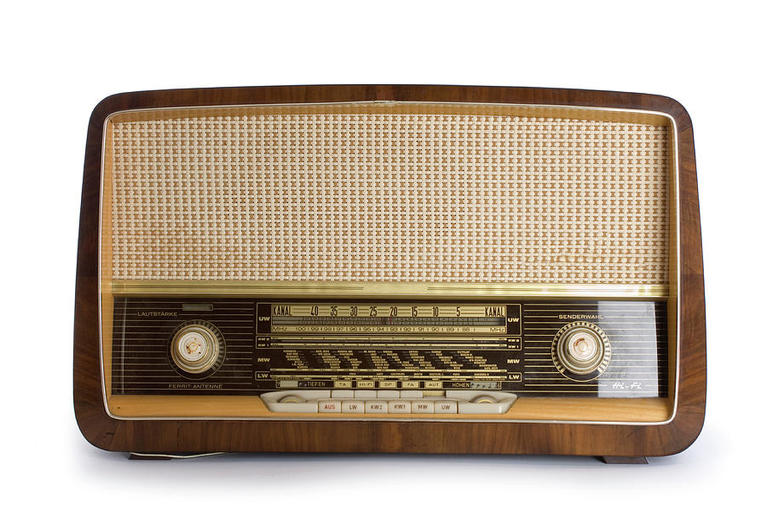
That was a day when peoples used to listen to favorite music or cricket commentary either on a television or radio.

Classic B & W Television

Classic Radio
As per technological enhancement, many up-gradation had been made to improve audio quality. But most of them are using wire connections with your phone, tablets, mp3 players, or i-pods. Many of us are using headphones or earphones which need a wire to connect with our device.
In the next phase of development Bluetooth headphones and earphones are also introduced in the market. It has wireless connectivity but these are having a wire to make the connection with their Bluetooth circuitry and battery. This physical layout makes it less impressive.

Bluetooth earphones

Bluetooth headphones

Bluetooth Air-buds
But in the present scenario Air- buds are playing a big role to impress every music lover or a binge-watcher. If you are a music lover or a person who spends lots of time on a phone call then you are already familiar with this gadget. It makes the revolution in the audio industry. It provides high-quality audio without any wired connectivity.
Let’s look inside the Air- buds. It built by using the below parts:
- Speakers
- Programmed Bluetooth board with mic
- Li-ion batteries
- Induction charger
- Audio amplifier
Speakers:
These are an important part of every audio system. In Air-buds its size is quite small and its power is approximately 2 mW (32-ohm resistance). As we can see this power is not sufficient for better audio quality but it is being managed by their diaphragm design and magnetic strength of the speaker magnet. Nowadays most Air-buds providing noise cancellation features and the design of speakers help in this.

Bluetooth Air-buds speakers, it has low power output

Bluetooth circuit board with integrated elements
Programmed Bluetooth board with microphone:
This circuit board is responsible to provide Bluetooth pairing features to Air-pods with other Bluetooth-enabled devices like smartphones. It has a pre-programmed memory that generates a 2.4 GHz frequency for Bluetooth communication. Most of the Air-buds are using low-powered Bluetooth boards to enhance battery life. Bluetooth circuit board uses two-way communication; it means that you can transmit as well as receive data at a time. In this circuitry, a microphone has been attached to provide voice communication with your smartphone.
Li-ion batteries:
Every portable device has its power supply. It is being achieved by using rechargeable batteries which are generally made of Lithium. Because of this rechargeable batteries are known as Li-ion batteries. The duration of battery power is mainly defined by Ampere-Hour. More the value of Ampere-Hour then more the time duration of battery power supply. Within Air-buds batteries are smaller in size and their power supply duration is defined by mili-ampere-hour (mAh); which is less than Ampere-Hour (Ah) unit. If you are not going to use your Air-buds for a long time then charge its battery at least once a month otherwise the battery will damage.
Audio amplifier:
Many audio systems use this circuitry to improve the power of the audio signal. As we know an amplifier is a device that increases the level of the input signal. In most of the Air-buds, all kind of circuitry has been implemented on a single PCB board. Even all components like Bluetooth trans-receiver, microphone, audio amplifier are also integrated with a single PCB.

Air-buds with charging case, to charge your Air-buds just put it into charging case
Induction charger:
In modern times most Air-buds charging cases are supporting wireless or induction charging. Induction charging uses a simple principle of electromagnetic induction. Generally, the Air-buds charging case has an induction power receiver and the power source is connected with the main power using a cable. To charge your Air-buds simply place them into your charging case.
Here induction charging generates electromagnetic waves which can damage the Bluetooth circuitry; to avoid this, proper magnetic shielding has been made to protect the Bluetooth circuitry.
Thanks for reading. See you soon with another exploration!





